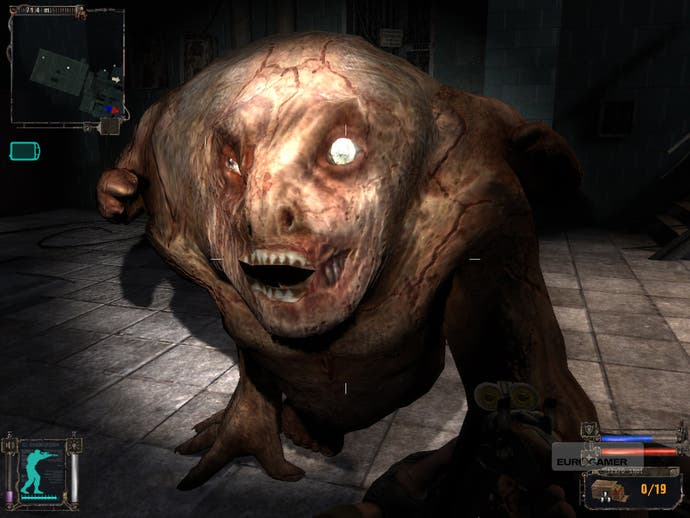Retrospective: S.T.A.L.K.E.R.: Shadow of Chernobyl
Not that kind of rad.
Stalker: Shadow of Chernobyl - let's drop all the dots - seemed to divide people. For every person I know who would enthuse and OMG about the atmospheric shooter, there would be another for whom the game had been a horrible mistake. This article, I suspect, isn't going to be for that second group of people. They've tasted this peculiar Ukrainian experience, and they won't be going back. For those who know the game, accept its foibles, and still find something worth spending time with, this will be a story they understand rather well. They'll probably be nodding along at the most salient points. Hopefully, however, we'll also have a third species of reader: the one who has yet to give it a try.
With Call of Pripyat, the third Stalker game, set for release later this year, the hour is ripe for both looking back on Shadow of Chernobyl, and for playing it. Call of Pripyat is the sequel to the events of the first game, while the Clear Sky - the flawed second game - acted as a prequel. I am inclined to hope that GSC's third excursion to the fictionalised exclusion zone will, at least in some way, match the accomplishments of the original. Clear Sky's lack of original content, peculiar atmosphere-breaking decisions, and badly-implemented faction warfare, meant that it was a step back from the first title. If you are one of those people who has not played any Stalker at all, then Clear Sky is something you can miss entirely.
That's not to say the original game, Shadow of Chernobyl, was in any way perfect. It was not the most subtle or elegantly designed of games, but its accomplishments were nevertheless numerous and awesome. While there were some bugs, and plenty of rough edges, GSC managed to create a game that was a singularity in the heavily populated landscape of shooters.
Partly this was down to the world it depicted. Stalker's core achievement was to blend the history and method of first-person shooters with both the real world, in the Chernobyl exclusion zone, and with Russian science-fiction. Stalker, as a wider fictional concept, came from the story Roadside Picnic, by influential Soviet science-fiction writers the Strugatsky brothers. It was then later built upon for the film Stalker, by Andrei Tarkovsky. The themes of both the book and the film were of unnatural happenings changing just a small part the world, and in doing so, creating a zone in which the rules of nature were warped. The Ukrainians already had such a zone on hand in Chernobyl, and by merging Soviet fictions of the past with their own real history, they created a rich concoction of urban decay, supernaturalism, and gritty, grubby violence.

GSC was able to go into the real-world zone and see first hand what Soviet construction looked like after a couple of decades of decay. The developers were not simply recording textures and taking inspiration from the ruinous architecture of the place, they were soaking up atmosphere - and that comes flooding back out in the game itself.
However, it's clear that the project catalysed something else within the development team, because at its most evocative Stalker goes further still: into spooky tunnels and horrifying claustrophobic catacombs. They seemed to somehow capture the finest points of tunnel-horror in traditional FPS games, and meld them with a larger, more liberated game world above ground. Stalker, a game in which shooting is the main mode of interaction, was nevertheless a game of distinct parts, and multiple aspirations. It wanted to be different, and also to be brilliant when it did the same things as other shooters.
That said, there was also plenty that was mechanistically unusual about the game. While all kinds of elements were incredibly familiar to gamers who have played a slice of FPS games in the past couple of decades - moving crosshairs, stamina, leaning - Shadow of Chernobyl managed to throw in a few things that were unusual: an RPG-style inventory and inexplicit character development across a number of fronts. One was the Stalker suit itself: the device that allowed you to not only absorb more damage, but to brave harsher environmental environments across the zone - a kind of levelling up via gas-masks and rad-suits. Then there were the artifacts themselves: the supernatural upgrades, spawned by the zone, that could be slotted into your stalker to make him tougher, fitter, or more resistant to radiation, heat, or electrical damage.








